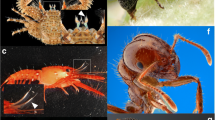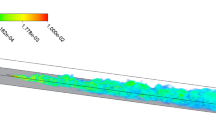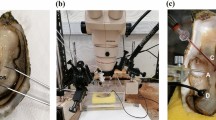Abstract.
A critical step in the process of olfaction is the movement of odorant molecules from the environment to the surface of a chemosensory structure. Many marine crustaceans capture odorant molecules with arrays of chemosensory sensilla (aesthetascs) on antennules that they flick through the water. We developed a model to calculate molecule flux to the surfaces of aesthetascs in order to study how the size, aesthetasc spacing, and flick kinematics of olfactory antennules affect their performance in capturing molecules from the surrounding water. Since the three-dimensional geometry of an aesthetasc-bearing antennule is complex, dynamically-scaled physical models can often provide an efficient method of determining the fluid velocity field through the array. Here we present a method to optimize the incorporation of such measured velocity vector fields into a numerical simulation of the advection and diffusion of odorants to aesthetasc surfaces. Furthermore, unlike earlier models of odorant interception by antennae, our model incorporates odorant concentration distributions that have been measured in turbulent ambient flows. By applying our model to the example of the olfactory antennules of mantis shrimp, we learned that flicking velocity can have profound effects on odorant flux to the aesthetascs if they operate in the speed range in which the leakiness of the gaps between the aesthetascs to fluid movement is sensitive to velocity. This sensitivity creates an asymmetry in molecule fluxes between outstroke and return stroke, which results in an antennule taking discrete samples in space and time, i.e. “sniffing”. As stomatopods grow and their aesthetasc Reynolds number increases, the aesthetasc arrangement on the antennule changes in a way that maintains these asymmetries in leakiness and molecule flux between the outstroke and return stroke, allowing the individual to continue to take discrete samples as it develops.
Similar content being viewed by others
Author information
Authors and Affiliations
Additional information
Received: 24 May 2000 / Revised version: 8 May 2001 / Published online: 7 December 2001
Rights and permissions
About this article
Cite this article
Stacey, M., Mead, K. & Koehl, M. Molecule capture by olfactory antennules: Mantis shrimp. J Math Biol 44, 1–30 (2002). https://doi.org/10.1007/s002850100111
Issue Date:
DOI: https://doi.org/10.1007/s002850100111




